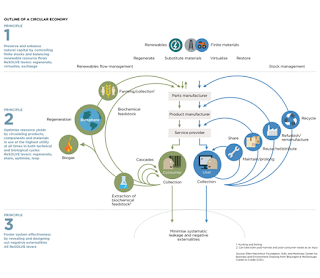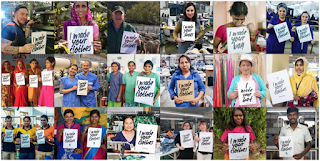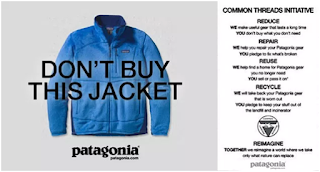As the battle on climate change
increases, more and more overwhelming statistics and foreboding scientific data
fill our feeds. Feeling despondent to it all is an understandable side effect.
However, on the flip side of
potential environmental catastrophe lies the innovation that could bring it,
and therefore us, back from the brink. Here are 9 sustainable innovations in
food waste, ocean pollution, water-scarcity and plastic manufacture set to
shape our lives and improve our futures.
Cleaning up our oceanic act of unkindness
It is estimated that close on 13
tons of plastic pollution is dumped into our oceans each year, causing harm to
not only our own health, but that of marine biodiversity too. These
ocean-geared innovations are combatting the plastic soup.
1.
Boat-fixed turbines collect plastic en-route
By far the biggest portion of
plastic waste is dumped in rivers. A young Ecuadorian innovator, Inty Grønneberg, has designed turbines capable of filtering and collecting
plastic waste before it ends up in the ocean. Installed on any boat, they are
able to collect up to 80 tons of plastic during navigation. His innovation is
focused on not requiring new infrastructure and vessels but rather to make the
most use of as many existing boats as possible.
2.
Bins for emptying ocean trash
Surfers, Andrew Turton and Pete
Ceglinski invented the Seabin, submersible bins with fitted pumps capable of sifting the
water and trapping the floating pollutants like plastic, detergent and oil. The
bins only need to be emptied once per month.
Food industry transformations through AI and intelligent plants
Half the world’s food harvest is
wasted due to fruit and veg being so susceptible to pathogens. Take into
consideration the greatly reduced pollinating powers of our declining bee
population and you could see where, without innovative thinking like this, we
would be facing an increased severity of food shortages and waste.
1.
Droid bees doing the heavy lifting pollination
Researchers at the University of
Warsaw have created robotic bees, or B-Droids, who could help in boosting the bee population by taking up
the tasks of low-nutritional and high-labour pollinating. Their concept is a
managing platform and ‘swarm’ of autonomous and semi-autonomous robotic bees,
who could identify crops and pollinate them effectively.
2.
Blockchain eliminating food waste
Part of IBM’s research arm, ‘5 in 5 innovations’, works on 5 AI technologies
that can be implemented in the next 5 years. One of these innovations calls for
a future where blockchain, AI and IoT devices work together to eliminate the
costly wastage and losses in the food supply chain. By collecting and sharing
this data within the grocery supply chain, planting, ordering and shipment can
be calculated to exact quantities, resulting in reduced waste and fresher food
for the consumer.
3.
Plant-based preservative cuts out cold storage
Demetra, founded by Italian start-up Green Code, is a 100%
plant-based preservative that not only improves the shelf life of fresh produce
but could also eliminate cold-storage during transit, thereby simultaneously
saving on energy.
Intelligent plastics made from waste and wasteful emissions
Scientists estimate that there may
be around 5.25 trillion macro and microplastic floating in the vast oceans.
While arising technologies that sifon out this harmful plastic solve one half
of the problem, other innovators are creating better plastics that will prevent
it from occurring again in the future.
1.
Bio-plastic from the humble avo-pip
Mexican chemical engineer, Scott
Munguia, has engineered a plastic from
a biopolymer
he’s discovered inside the pip of an avocado. The single use cutlery made from
his bioplastic biodegrades in 240 days. Most notably, this bioplastic is not
only manufactured from a previously discarded food item - an estimated 300,000
tons are discarded annually in Mexico alone, but also not manufactured from a
food source crop like corn, cassava or sugarcane.
2.
Greenhouse gases become profitable plastics
Carbon capture and storage (CCS)
technology makes it possible for carbon to be captured and compressed at the
source, where it can then be moved to storage. While this technology can
significantly reduce green-house gasses, it is now also being used profitably
to make products.
AirCarbon is a verified carbon-negative material that can be used to
manufacture everyday products that would have otherwise used fossil fuels and
oil, by combining the sequestered carbon with oxygen. The entire manufacturing
process is carbon negative.
Water-wiser engineering
30-40% of the world will face water
scarcity by 2020. As a climate-change exacerbated reality, 1.8 billion people
will live in regions of water scarcity by 2025. This not only affects fresh
drinking water but the ability to grow food. This innovative thinking could
help.
1.
Growing plants in the desert
The Groasis Waterboxx makes growing crops in an intelligent plant device that
germinates, incubates and waters saplings possible. It also has a 90% less water requirement
than traditional methods.
2.
Drinking water from clouds
For coastal and mountainous areas
with less access to clean drinking water, a 3D mesh innovated by CloudFisher can convert the fog into safe drinking water while
withstanding winds of 120 kmp/h. The design is an improved-upon innovation on the first fog collectors
installed in Eritrea in 2007.













